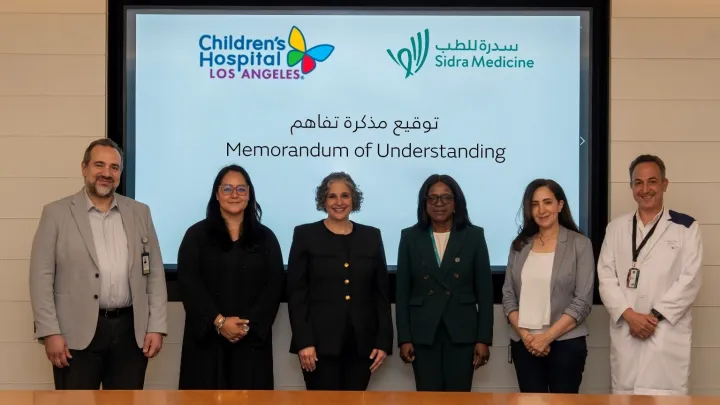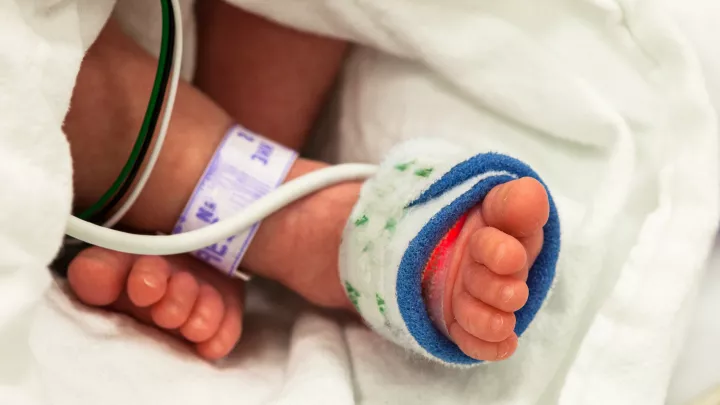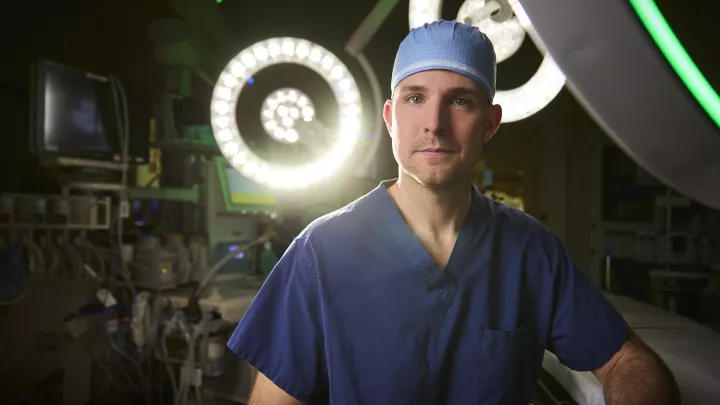Coronary Anomaly Program
A coronary anomaly, also called anomalous coronary artery, is a type of heart defect affecting the location or structure of one or more coronary arteries. Coronary arteries supply blood to the heart.
Coronary anomalies can be difficult to diagnose because many people don’t experience symptoms. But coronary anomalies can cause serious complications and even death, which makes early diagnosis critical. Children's Hospital Los Angeles is creating a registry to track different types of coronary anomalies. Our registry will help us better understand which types have the highest risk so we can provide more effective treatments.
What Is a Coronary Anomaly?
A coronary anomaly is a birth (congenital) defect in which coronary arteries form in the wrong place or shape.
There are many different types of coronary anomalies. Each type has different symptoms and risks. Some types may not cause any problems, while others may cause life-threatening complications. Our goals include increasing awareness about these heart defects and testing high-risk groups.
Anomalous coronary artery
Our doctors treat anomalous aortic origin of a coronary artery (AAOCA), which is a type of anomalous coronary artery. Normally, the coronary arteries branch off from the aortic sinuses (bulges in the aorta). The left coronary artery (LCA) typically starts from the left aortic sinus, and the right coronary artery (RCA) typically starts from the right aortic sinus. In children with AAOCA, these arteries branch off from different places on the aorta.
AAOCA is more likely to cause dangerous complications than other types of anomalous coronary arteries. It is the second most common cause of sudden cardiac death (SCD) in young athletes in the U.S. It is also responsible for approximately 14% to 17% of all heart-related deaths in children and young adults.
Coronary Anomalies We Treat
- Anomalous origin of coronary arteries
- Anomalous left coronary from the pulmonary artery (ALCAPA)
- Anomalous right coronary from the pulmonary artery (ARCAPA)
Coronary Anomaly Program: Why Choose Us
At Children's Hospital Los Angeles, your child gets world-class care for a coronary anomaly. The Heart Institute regularly ranks among the top pediatric cardiology and heart surgery programs in the country, according to U.S. News & World Report. Our Coronary Anomaly Program features:
- Advanced diagnostic testing: Thanks to our advanced imaging technologies, we can take detailed pictures of your child’s heart to look for any structural anomalies. If imaging tests show your child may have a coronary anomaly, we perform additional tests to confirm the diagnosis. Follow-up tests may include an exercise (stress) test or heart catheterization.
- Surgical expertise: Our surgeons are among the best in the country for pediatric heart surgery. We offer a wide range of surgeries to treat coronary anomalies, including novel approaches such as pulmonary root translocation surgery to treat specific types of coronary anomalies. We have experience treating patients with complex anatomies and rare conditions.
- Multidisciplinary team: Diagnosing and treating coronary anomalies involves several subspecialties. These areas of expertise include noninvasive cardiac imaging, electrophysiology, cardiac catheterization and cardiothoracic surgery. Our experts in these subspecialties work together to find the best treatment options for your child.
- Kawasaki Program: Kawasaki disease causes inflammation in the coronary arteries. Left untreated, this inflammation can lead to coronary anomalies. We have extensive experience treating Kawasaki disease, so our experts can help reduce the risk of this complication. Learn more about our Kawasaki Disease Program.
Coronary Anomaly Symptoms
Some children do not experience symptoms and receive a diagnosis based on heart imaging done for other reasons. For those that do have symptoms, the most common ones vary by age.
Symptoms in infants and young children
Symptoms may include:
- Breathing difficulties
- Paleness, compared to usual skin tone — on dark skin, paleness is most visible on the lips, nails or eyeballs
- Problems eating
- Sweating
Symptoms in teens and young adults
Warning signs include having any of these symptoms during or right after physical activity:
- Chest pain
- Dizziness
- Fainting
- Heart palpitations
- Shortness of breath
If your child experiences any of these symptoms, seek emergency care immediately.
Treatment options
Some types of coronary anomalies don’t need treatment but require ongoing cardiology monitoring. For types that do need treatment, options include:
- Lifestyle changes: The biggest risk from a coronary anomaly is reduced blood flow to the heart during physical activity. Doctors may recommend exercise restriction for certain types of serious coronary anomalies to reduce the risk of sudden cardiac arrest.
- Medication: Doctors may use medication to treat mild or moderate symptoms. Medications may include beta blockers, diuretics, antiarrhythmics or oxygen therapy.
- Surgery: Surgical options vary depending on the type of coronary anomaly you child has. Our doctors develop a tailored surgical approach to treat each individual patient. Some procedures we undertake include opening up the mount of the coronary artery (unroofing), moving the coronary artery to its appropriate site of origin (translocation) or moving other vessels that compress the coronary artery (pulmonary artery or root translocation).


